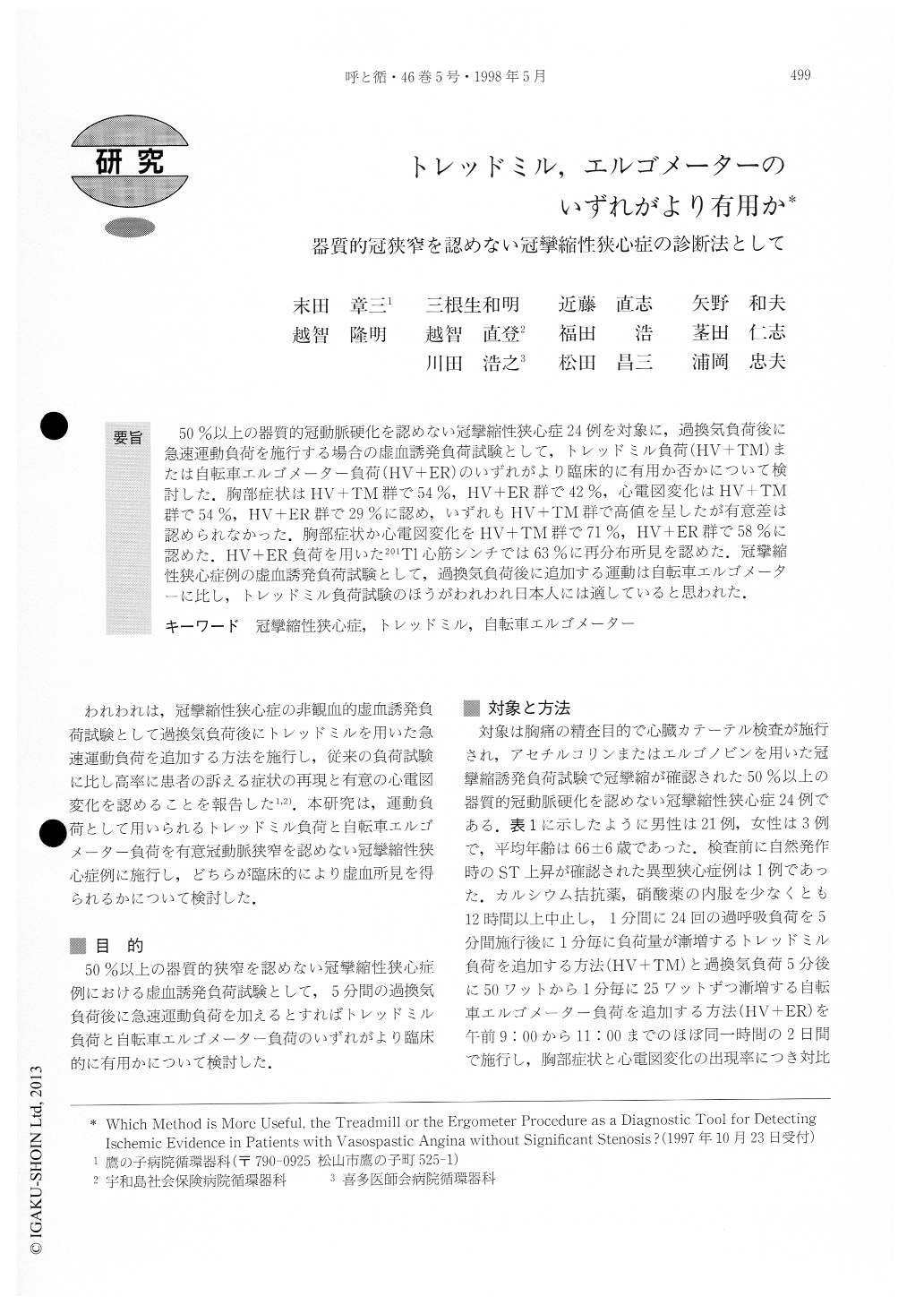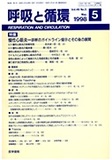Japanese
English
- 有料閲覧
- Abstract 文献概要
- 1ページ目 Look Inside
50%以上の器質的冠動脈硬化を認めない冠攣縮性狭心症24例を対象に,過換気負荷後に急速運動負荷を施行する場合の虚血誘発負荷試験として,トレッドミル負荷(HV+TM)または自転車エルゴメーター負荷(HV+ER)のいずれがより臨床的に有用か否かについて検討した.胸部症状はHV+TM群で54%,HV+ER群で42%,心電図変化はHV+TM群で54%,HV+ER群で29%に認め,いずれもHV+TM群で高値を呈したが有意差は認められなかった.胸部症状か心電図変化をHV+TM群で71%,HV+ER群で58%に認めた.HV+ER負荷を用いた201T1心筋シンチでは63%に再分布所見を認めた.冠攣縮性狭心症例の虚血誘発負荷試験として,過換気負荷後に追加する運動は自転車エルゴメーターに比し,トレッドミル負荷試験のほうがわれわれ日本人には適していると思われた.
We examined which procedure, the treadmill or the bicycle ergometer exercise test, was clinically more useful for detecting ischemic evidence in patients with vasospastic angina who had no fixed stenosis exceeding 50 percent. Both a modified treadmill exercise test staged up at every minute based on Bruce protocol after five minutes' hyperventilation (HV+TM) and a bicycle ergometer exercise test with increments of 25 watt every one minute after five minutes' hyperventilation (HV + ER) were performed in all 24 patients for induc-ing the appearance of chest symptoms and/or positive ECG changes. While chest symptoms were determined in 54% of patients during HV+TM and in 42% during HV+ ER, positive ECG changes were obtained in 54% during FIV +TM and in 29% during HV+ER. There was no statistical difference between the two procedures concerning the appearance of chest symptoms and posi-tive ECG changes. Chest symptoms and/or positive ECG changes were also determined in 71% with HV+TM and in 58% with HV+ER. However, there was no significant difference between the two tests. Rate pres-sure product revealed no statistical difference between the two procedures. Only 63% of patients disclosed ischemic redistribution by performing 201T1 myocardial scintigraphy using HV +ER.
We concluded that treadmill exercise was superior to bicycle ergometer exercise for the induction of ischemic evidence in Japanese patients with vasospastic angina but who had no significant stenosis.

Copyright © 1998, Igaku-Shoin Ltd. All rights reserved.


